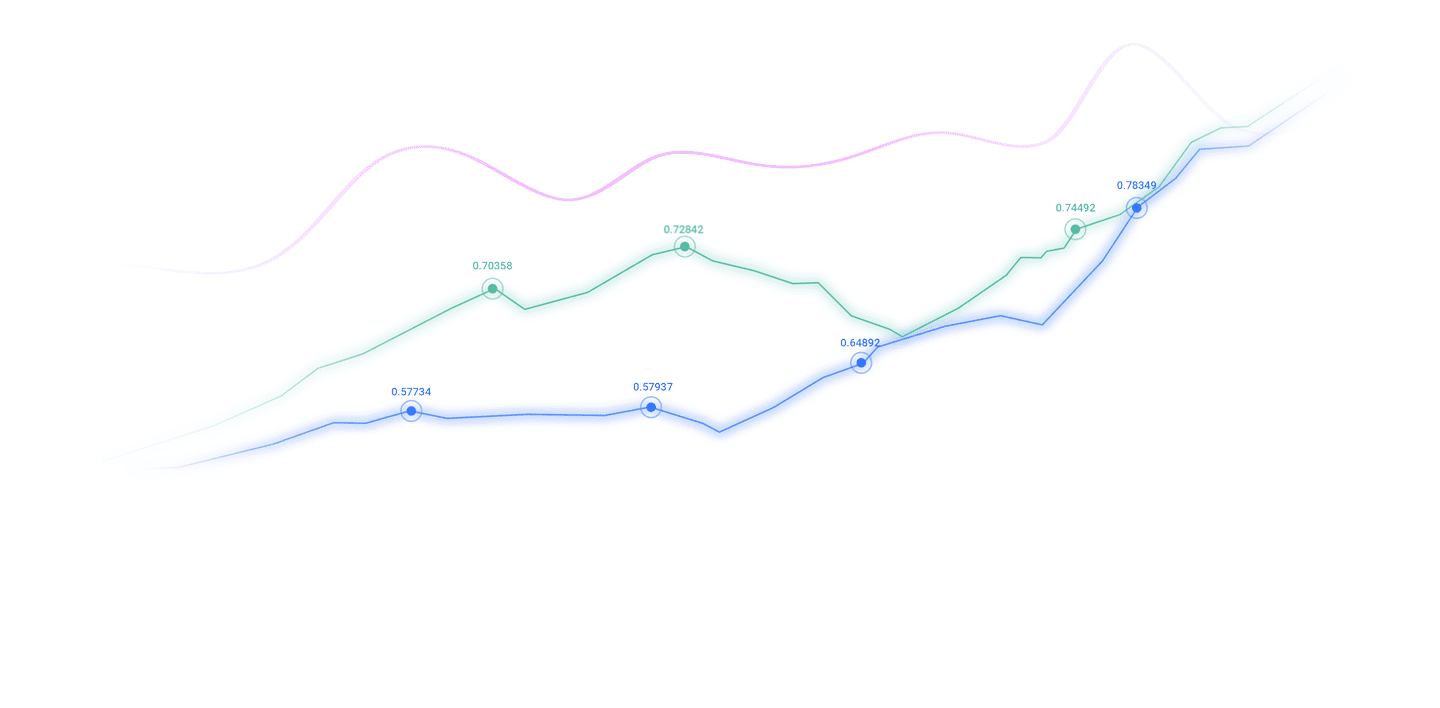Trusted by over 15 Million Traders
The Most Awarded Broker
for a Reason
CATEGORIES
News
- 【XM Market Review】--Weekly Forex Forecast – USD/JPY, USD/CAD, Gold, Coffee, Corn
- 【XM Market Review】--USD/CHF Forecast: Pulls Back Against the Swiss Franc as Rate
- 【XM Market Review】--Gold Analysis: Will XAU/USD Rise in 2025?
- 【XM Market Review】--Coffee Arabica Weekly Forecast: Another Solid Pop Higher and
- 【XM Forex】--USD/TRY Forecast: Reports Reveal Lira's Significant Appreciation in
market analysis
Job decline and wage rise test US dollar and Fed policy
Wonderful Introduction:
If the sea loses the rolling waves, it will lose its majesty; if the desert loses the dancing of flying sand, it will lose its magnificence; if life loses its real journey, it will lose its meaning.
Hello everyone, today XM Foreign Exchange will bring you "[XM Foreign Exchange Decision Analysis]: Employment decline and salary increase test US dollar and Federal Reserve policies." Hope it will be helpful to you! The original content is as follows:
U.S. employment growth is weak and wage growth is accelerating, pushing the US dollar and Federal Reserve policies to a crossroads. The market will closely monitor the non-farm employment report (NFP) on Friday (September 5) to see if the coexistence of labor market weakness and wage growth will disrupt the Fed's interest rate cut plan.
U.S. Employment Market Outlook: Focusing on weak employment and wage pressure
If the previous non-farm employment report only triggered market fluctuations, it would probably be an understatement. It not only aggravated market volatility, but also led to the removal of the US Bureau of Labor Statistics within a few hours of the data release.
President Trump accused the revised data of being "manipulated" and favoring the Democratic Party. Especially after the number of non-agricultural employment fell sharply from 147,000 to 14,000 in June, the number of non-agricultural employment increased by only 73,000 in July (expected 111,000), which failed to calm the storm at all.
The market responded quickly: As the Fed's expectation of interest rate cuts heated up again, the dollar fell.
There is no doubt that the market will closely monitor Friday's non-farm data to determine whether the downturn in July was accidental or the beginning of a more worrying trend. However, through in-depth data analysis, the market may need to prepare for further weak employment.
Since its peak in 2020, U.S. employment growth has continued to be on a downward path, and the emergence of negative data seems to be increasingly likely. Some signs suggest that the decline has emerged, which may indicate that this week's employment data may be disappointing again, and will undoubtedly intensify Trump's political calls to pressure the Fed to cut interest rates and drag the dollar down.
U.S. non-farm employment data trends show that private sector employment data supports the overall figures, while manufacturing and governmentEmployment data continue to weaken.
The number of employment in manufacturing has shrunk for three consecutive months, with a cumulative decrease of 36,000 jobs.
Employment in government departments fell 10,000 in July and 75,000 in May, and has continued to fall below its 12-month moving average since the first quarter of 2024.
Private sector employment remains the main support, with 83,000 new people added in July (up from the overall data of 74,000). Even so, the data has been below its 12-month moving average for three consecutive months and has declined simultaneously with the overall employment trend.
ISM manufacturing and service industry PMI further confirmed the weakness of the labor market: the employment sub-index in both surveys showed a downward trend. The manufacturing employment index continues to be in a contraction range, and the employment situation in the service industry is also steadily slowing down.
The current status of the unemployment rate and labor participation rate in the United States
The unemployment rate is still at a historical low of 4.2%, but the labor participation rate has declined for three consecutive months, falling to its lowest point in 31 months. Against the backdrop of nearly stagnant employment growth and on the verge of shrinking, the unemployment rate is likely to rise to around 5% early next year. This change may curb the recent rebound in wage growth, although the Fed has long noticed its upward trend.
Analysis of wage growth and inflation impact
Although the US labor market showed weakness, wage growth has risen again, with a year-on-year increase of 3.9%. This figure may not be alarming, but it brings www.xmniubi.complex and uneven situations to policy makers against the backdrop of a decline in labor participation and a gradual rise in unemployment.
For the Fed, the continued rise in wages will make the path to rate cuts more www.xmniubi.complicated. Even if the job market weakens, inflationary pressures may continue, forcing the Fed to balance the risk of aggravated job market slack and the risk of price increases again.
For traders, this Friday's non-farm employment report is not only about overall employment data—the wage growth sub-item may also cause market volatility. If the data is higher than expected, it may push up US Treasury yields and the US dollar in the short term; if it is less than expected, it will further enhance the market's expectations for the Federal Reserve to cut interest rates early.
U6 unemployment rate—a key indicator for measuring implicit slack in the labor market
To more www.xmniubi.comprehensively evaluate the unemployment situation in the United States, economists and the Federal Reserve often refer to the U6 unemployment rate. In addition to the official unemployment rate (U3), the indicator also covers the following groups:
Friendly attached workers: Want to find jobs but are not actively seeking jobs;
Frustrated workers: give up looking for jobs because they think there is a lack of opportunities;
Involuntary part-time workers: Want to work full-time but are forced to work part-time positions.
The slack in the U.S. labor market is expanding. As underemployment ratios climb, the gap between the U6 and U3 unemployment is widening, but it has not yet reached the level during the recession.
U6 unemployment rate is always higher than U3 due to its wider coverage, but the difference between the two canIt highlights the slack problem of labor market.
The U6 unemployment rate has been on an upward trend since July 2023, and is currently at 7.9%, close to its highest level since June 2021. This figure is higher than the average since the post-epidemic trough period in December 2022 (7.3%), but is still far below the long-term average of 10.4%, including the recession.
The difference between U6 and U3 is also widening, indicating that there is more structural unemployment than the official unemployment rate. Although it has not reached recession levels, it reflects the intensification of labor market slack.
Dollar Index (DXY) Technical Analysis
The bulls of the US dollar index have successfully maintained the 97.45 support level. If wage growth accelerates and Friday's non-farm data is no longer weaker than expected, the U.S. dollar index could face a larger rebound. Although the possibility of rising to the 100 mark is questionable, the possibility of temporarily breaking through 99 before the next round of decline cannot be ruled out.
The timing of the next action being able to start again may depend on this week's employment data: if the employment report is weak and wage growth is limited, the US dollar is likely to effectively fall below 97.45 and restart the downward trend.
The above content is all about "[XM Forex Decision Analysis]: Employment decline and salary increase test the US dollar and Federal Reserve policies". It is carefully www.xmniubi.compiled and edited by the XM Forex editor. I hope it will be helpful to your transactions! Thanks for the support!
Spring, summer, autumn and winter, every season is a beautiful scenery, and it stays in my heart forever. Leave~~~
Disclaimers: XM Group only provides execution services and access permissions for online trading platforms, and allows individuals to view and/or use the website or the content provided on the website, but has no intention of making any changes or extensions, nor will it change or extend its services and access permissions. All access and usage permissions will be subject to the following terms and conditions: (i) Terms and conditions; (ii) Risk warning; And (iii) a complete disclaimer. Please note that all information provided on the website is for general informational purposes only. In addition, the content of all XM online trading platforms does not constitute, and cannot be used for any unauthorized financial market trading invitations and/or invitations. Financial market transactions pose significant risks to your investment capital.
All materials published on online trading platforms are only intended for educational/informational purposes and do not include or should be considered for financial, investment tax, or trading related consulting and advice, or transaction price records, or any financial product or non invitation related trading offers or invitations.
All content provided by XM and third-party suppliers on this website, including opinions, news, research, analysis, prices, other information, and third-party website links, remains unchanged and is provided as general market commentary rather than investment advice. All materials published on online trading platforms are only for educational/informational purposes and do not include or should be considered as applicable to financial, investment tax, or trading related advice and recommendations, or transaction price records, or any financial product or non invitation related financial offers or invitations. Please ensure that you have read and fully understood the information on XM's non independent investment research tips and risk warnings. For more details, please click here


































































































